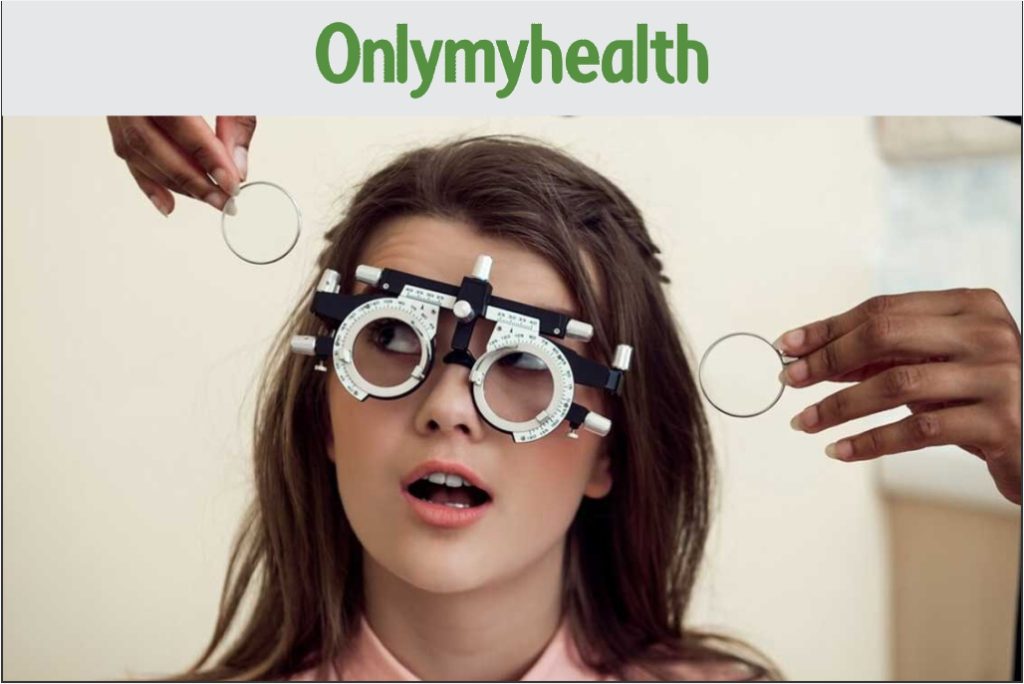Myopia is an eye problem in which close objects appear clear but distant objects appear blurry. Read to know more.
Myopia is a condition which affects the distant vision of eyes. It means one who is affected will face trouble while viewing objects that are far away. It usually develops during childhood and runs in families. According to a study by All India Institute of Medical Sciences, nearly 13 percent of school going kids are myopic. To discuss all about myopia, Only My Health reached Dr Mahipal Sachdev, Centre for Sight.
What Is The Severity Of Myopia?
Myopia is also known as nearsightedness, and can be categorised by various levels of severity based on the diopter measurement, which determines the refractive error of the eye.
Simple myopia, which is on the lower end of the myopic spectrum, is measured between zero and six diopters. Diopters are units of measurement for the size of spectacles or contact lenses. A three dioptre prescription, for example, will have thinner lenses than an eight dioptre prescription.
“Mild Myopia can be upto 2D, Moderate Myopia ranges from -2D to -6D, and Severe Myopia is -6D. The highest reported levels of myopia can range beyond -25 to -30 diopters or even higher in extreme cases. Severe myopia can come with a higher risk of eye complications such as retinal detachment, macular degeneration, and other eye conditions,” said Dr Sachdev, adding, regular eye check-ups and consultations with eye care professionals are crucial, particularly for those with higher degrees of myopia, to manage and monitor any associated risks.
What Is Pediatric Myopia?
“Paediatric myopia, also known as childhood or juvenile myopia, refers to nearsightedness that develops in children. In paediatric cases, this condition progresses during childhood and adolescence,” Dr Sachdev said.
“Paediatric myopia tends to progress as the child grows, and higher degrees of myopia can lead to potential eye health risks later in life, including retinal detachment, glaucoma, or macular degeneration,” he added.
According to Dr Sachdev, managing paediatric myopia often involves interventions such as prescription eyeglasses or contact lenses, atropine eye drops, and orthokeratology (corneal reshaping with contact lenses worn overnight).
Further, lifestyle changes, like spending more time outdoors and reducing prolonged near work, can help slow down the progression of myopia in children.
As per Dr Sachdev, regular eye examinations and consultations with an eye care professional are essential to monitor and manage paediatric myopia.
What Causes Myopia?
“The exact cause of myopia is not entirely understood, but both genetic and environmental factors play significant roles. Factors such as increased near work, such as reading or using electronic devices for extended periods, limited time spent outdoors, and a family history of myopia can contribute to its development,” Dr Sachdev stated.
Prominent risk factors of Myopia?
Pointing out to the risk factors that cause Myopia Dr Sachdev said that increased near work such as reading or using electronic devices for extended periods, limited time spent outdoors, and a family history of myopia can contribute to the development of myopia.
Using Which Kind Of Lens Myopia is corrected?
The goal of lenses is to compensate for the refractive error in the eye and allow individuals with myopia to see distant objects more clearly. Dr Sachdev lists several types of lens that are used to correct myopia.
Concave (Minus) Lenses are the most common type of lenses used to correct myopia. Concave lenses are thinnest at the centre and thicker at the edges. They diverge light before it reaches the eye, helping to focus the image correctly on the retina, reducing blurriness and allowing distant objects to be seen more clearly.
Prescription eyeglasses Or Contact Lenses with concave (minus) lenses are the most straightforward and commonly used method to correct myopia. They are available in various styles and designs to accommodate different visual needs.
Orthokeratology Lenses (Ortho-K): These are specialised contact lenses worn overnight to temporarily reshape the cornea, reducing the refractive error. They are removed in the morning, allowing clear vision during the day. This method is used for myopia control and can slow down its progression, particularly in children.
Nowadays, there are newer types of lenses (That include small constellations of lenslets, within the main lens), that help to diverge the light throughout the retina, thus preventing the stimulus that provokes elongation of the eye, thus, preventing myopia progression.
Choosing the most suitable type of lens to correct myopia depends on various factors, including the individual’s lifestyle, eye health, and preferences. It’s crucial to consult with an eye care professional to determine the most appropriate type of correction for your specific myopia.
Can Myopia be cured permanently?
As of date, myopia (nearsightedness) is generally considered a refractive error rather than a disease. Various treatments and interventions aim to manage myopia and potentially slow its progression.
While there isn’t a guaranteed permanent cure for myopia progression, certain methods have shown promise in controlling its advancement.
Lifestyle Changes may help slow the progression of myopia. As of today, Refractive Surgeries are the only known treatment that can eliminate myopia.
According to Dr Sachdev, procedures like LASIK (Laser-Assisted In Situ Keratomileusis), PRK (Photorefractive Keratectomy), Contoura Vision & SMILE (Small Incision Lenticule Extraction) reshape the cornea to correct refractive errors, including myopia. As per him, these surgeries can significantly reduce or eliminate the need for glasses or contact lenses, but they don’t always stop myopia from potentially progressing after the surgery.
Dr Sachdev emphasised that a new Technology has been launched, for correction of myopia, aptly named SILK (Smooth Incision Lenticular Keratomileusis). SILK is the next-gen in lenticule based surgeries.
The laser technology
(ELITA) behind SILK is also path-breaking. The laser is super-fast, ultra-precise, and dissipates a very small quantum of energy, causing minimal damage to corneal tissue. Such a fast laser gives smooth cuts on the cornea, thereby giving faster recovery, and patients have very good vision within 24 hours of the procedure.
Research into myopia control and potential treatments is ongoing. However, with the right interventions and management, it is possible to control myopia and reduce its progression.
Source: https://www.onlymyhealth.com/all-about-myopia-1699257556

